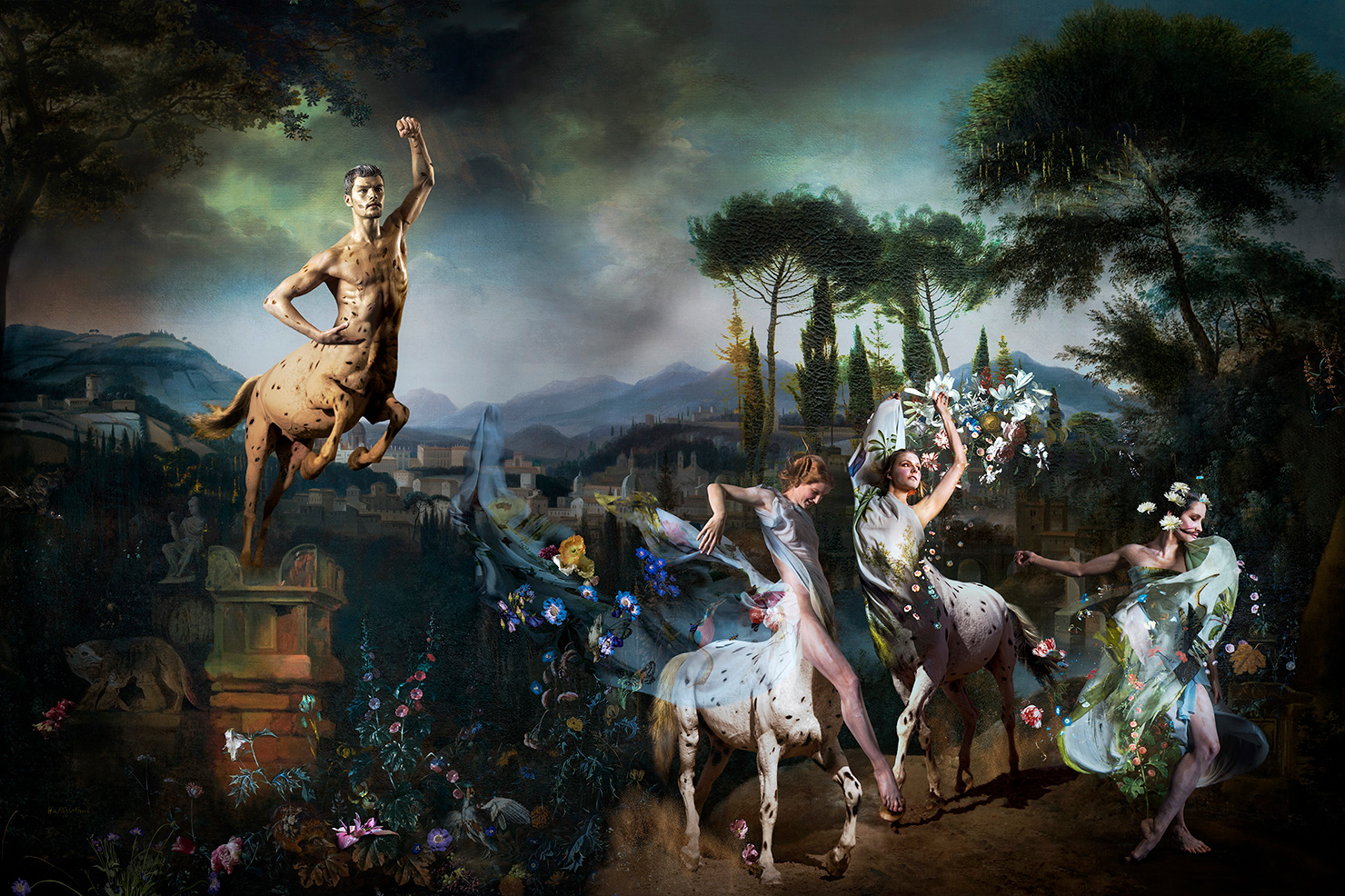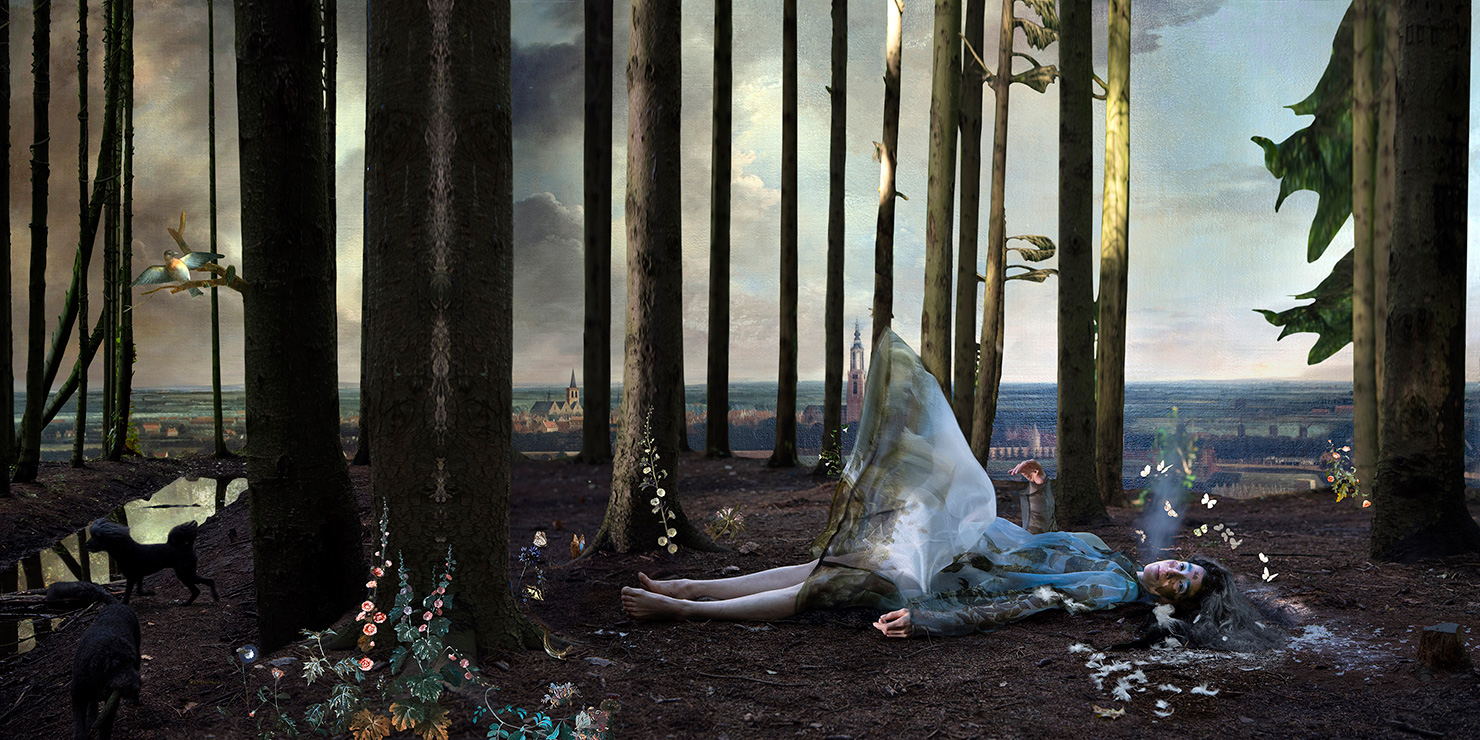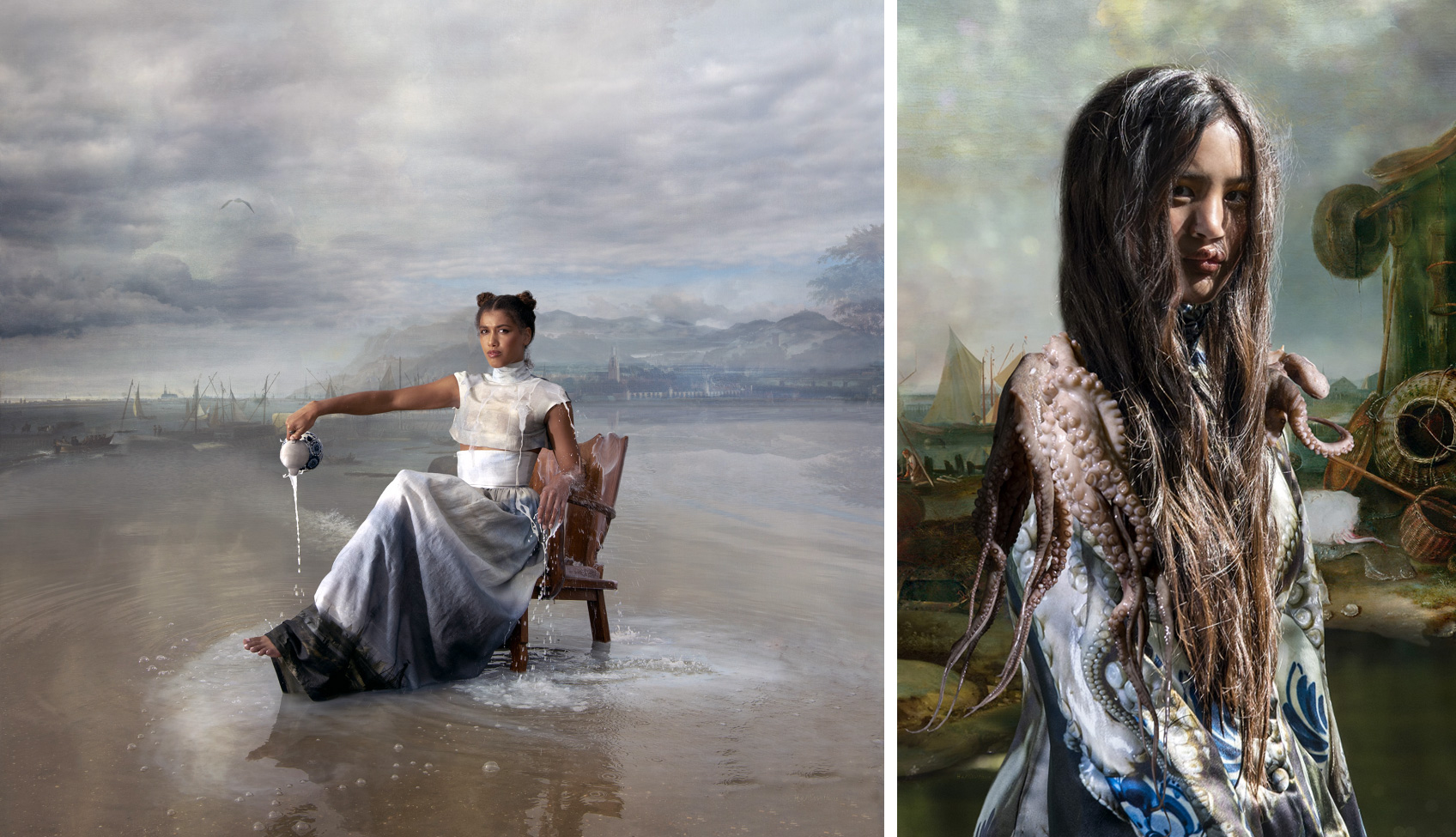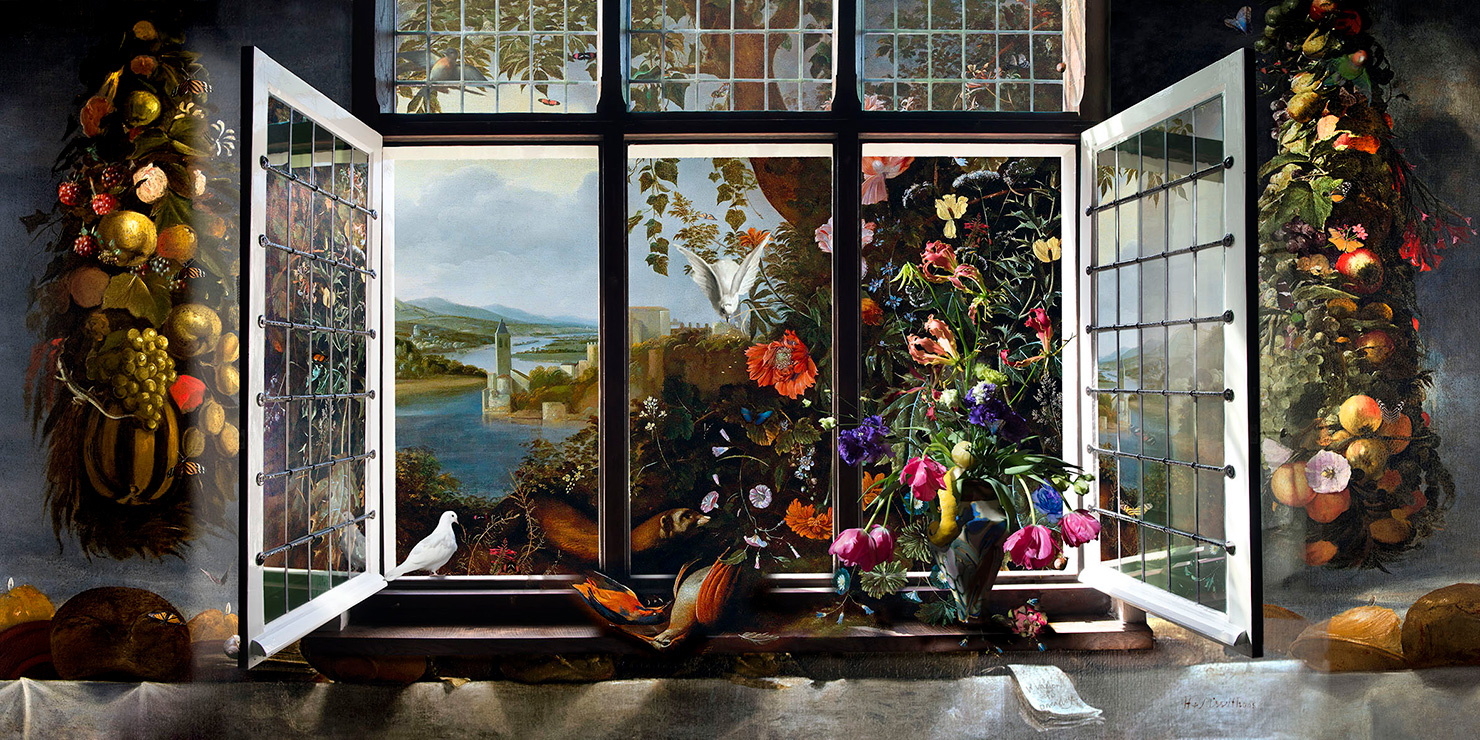PREVIEW:A Different Light on Withoos-Three Generations Withoos
 The exhibition “A different Light on Withoos – Three Generations Withoos” shows ninety Withoos creations; of father Mathias (the 17th century painter), his children and of the contemporary photographer and descendant Hans Withoos. Mathias Withoos is renowned internationally for the dramatic, caravaggian light in his panoramic townscapes and detailed still lifes.
The exhibition “A different Light on Withoos – Three Generations Withoos” shows ninety Withoos creations; of father Mathias (the 17th century painter), his children and of the contemporary photographer and descendant Hans Withoos. Mathias Withoos is renowned internationally for the dramatic, caravaggian light in his panoramic townscapes and detailed still lifes.
By Dimitris Lempesis
Photo: Museum Flehite Archive
The multi-layered exhibition “A different Light on Withoos – Three Generations Withoos” gives a representative overview of the impressive body of work by Mathias Withoos and an impression of the work of his painting children. Hans Withoos’ photographic works interact with the paintings.
Hans Withoos (1962- ) studied textile design and photography at the Academie voor Beeldende Vorming (Academy of Visual Arts) in Tilburg. He has been a photographer for more than thirty years and exhibits frequently and internationally. Hans Withoos is fascinated by beauty in all its aspects: the beauty of drama, of the body and of light, as well as the beauty of suffering, as is shown in his series ‘Nocturnal Delight’ based on the seven deadly sins. His series “New Romantics” and “Lady with her Golden Toys” show his fascination with the beauty of strength, and his latest series of still lifes, “Withoos meets Withoos” is all about the beauty of symbolism. Like all his other work, his still lifes show his dramatic use of light and the layering that are his signature style. The photography of Hans Withoos is set in a world of abundance and artifice, suggesting a certain decadence It is a world that is both alien and familiar. The figures that crowd his images become archetypes, leaving the viewer with a sense of alienation. His work is multi-layered, with carefully staged images and an idiosyncratic aesthetic. The images sometimes evoke emotions such as suffering, sensuality and oppressiveness; at other times they are deliberately devoid of any emotion at all. As Hans Withoos says: “The images don’t show a critical perspective, but rather an observant one”. About his work method, he explains: “I come up with an idea and then go looking for the right location, the models and the styling, and while I combine them to make the final image, I am still open to change, improvement and new ideas. Yes, it is staged photography. But even for me, there are always surprises in my work, an element of the unexpected. After the shooting, I then work like a painter, carefully layering the images, creating the final image in my mind and on my computer. It can take weeks before a picture is finally completed”. In the series “Withoos meets Withoos, The People” photographer Hans Withoos gives a new interpretation to the paintings of his distant ancestor Mathias, adding to them people and life. He combines the still lifes and town views with contemporary, surrealistic images, shedding a different light on transience. In his colorful work diversity and inclusivity play a prominent part. The textiles designed by him personally are based on the work of his ancestors and incorporated in the clothing of the models.
Matthias Withoos (1627–1703), also known as Calzetta Bianca and Calzetti, was a Dutch painter of still lifes and city scenes, best-known for the details of insects, reptiles and undergrowth in the foreground of his pictures. Withoos was born in Amersfoort. He studied under Jacob van Campen, at his painters’ school just outside the city at his country house, and then with Otto Marseus van Schrieck. When he was 21, Withoos made a trip to Rome with Van Schrieck, and Willem van Aelst. There they joined the group of northern artists known as the “Bentvueghels” (“Birds of a feather”), and Withoos went by the alias “Calzetta Bianca” (“White Hose”)—a translation of his name into Italian. Withoos’ work caught the eye of the cardinal Leopoldo de Medici, who commissioned various paintings from him. In 1653, the artist returned to Amersfoort. When French troops occupied Amersfoort in the “Disastrous Year” of 1672, Withoos fled from Amersfoort to Hoorn, where he would remain until his death in 1703. Following the artist’s career as a painter of cityscapes, his student Caspar van Wittel was instrumental in developing the genre of architecture vedute in Rome. Many of Withoos’ seven children also followed in his footsteps, including the botanical artist Alida Withoos.
Alida Withoos (1661-1730) was born in Amersfoort. With three brothers Johannes, Pieter, Frans, and her sister Maria, she was trained by her father in painting still lifes and botanical illustrations. Because of the invasion of Utrecht by the French, the family moved to Hoorn in 1672. In 1701, Alida married the Fijnschilder Andries Cornelisz van Dalen, a typical example of relations between artistic and painterly families 17th and 18th century Holland. A training in painting was expensive and not often given to daughters, but talented daughters could be trained to work in the studio of their father, uncle, brother or spouse, often under his name. Unlike her husband, brothers and sister, Alida acquired a certain reputation painting under her own name, principally due to her botanical images. Alida was (with her brother Pieter ) one of the many artists who painted plants on the country house place Vijverhof in the service of Agnes Block. She painted in 1687 (at Agnes Block’s) the first pineapple bred in Europe,. Thirteen water colors that Alida made in 1694 for the colored Moninckx Atlas, along with 425 images of plants in the Hortus Botanicus in Amsterdam have survived.
Photo: Hans Withoos, Centaurs, 2019, Color photograph, © Hans Withoos, Courtesy the artist and Museum Flehite
Info: Museum Flehite, Westsingel 50, Amersfoort, The Netherlands, Duration: 12/12/2021-8/5/2022, Days & Hours: Tue-Sun 10;00-17:00, www.museumflehite.nl


Hans Withoos, Fight for Freedom, 2019, Color photograph, © Hans Withoos, Courtesy the artist and Museum Flehite

